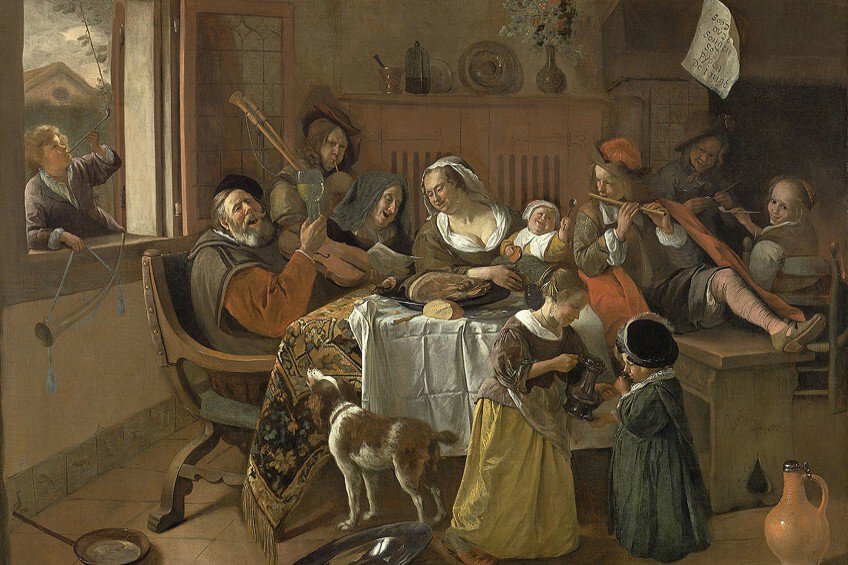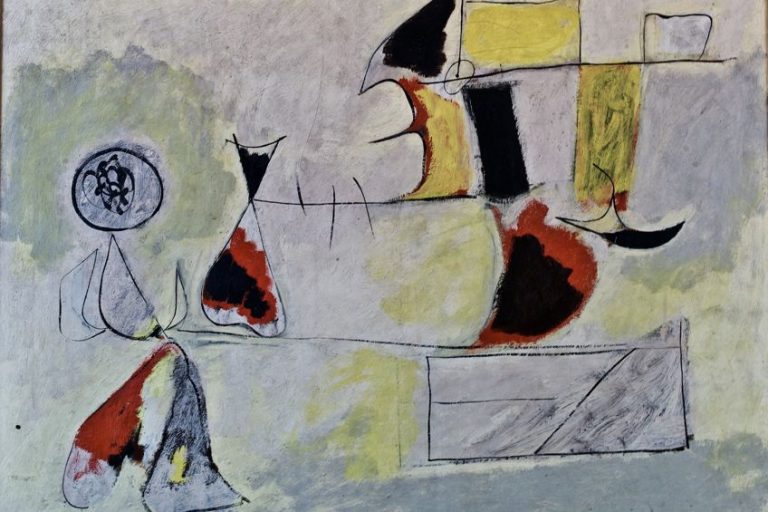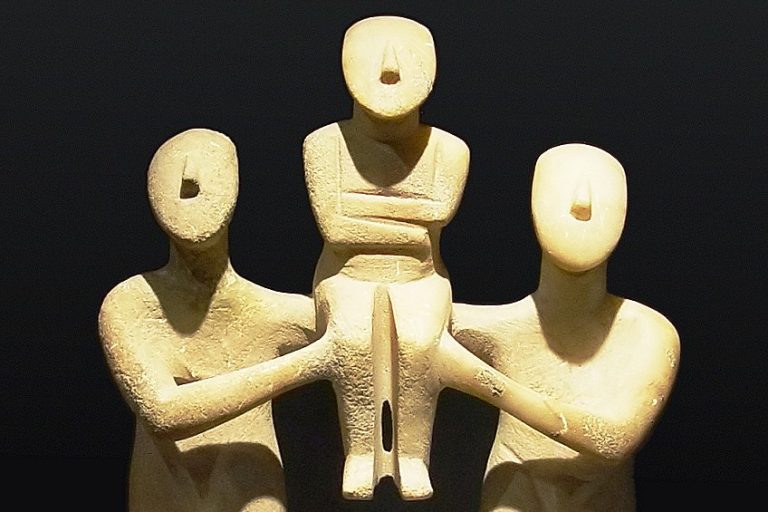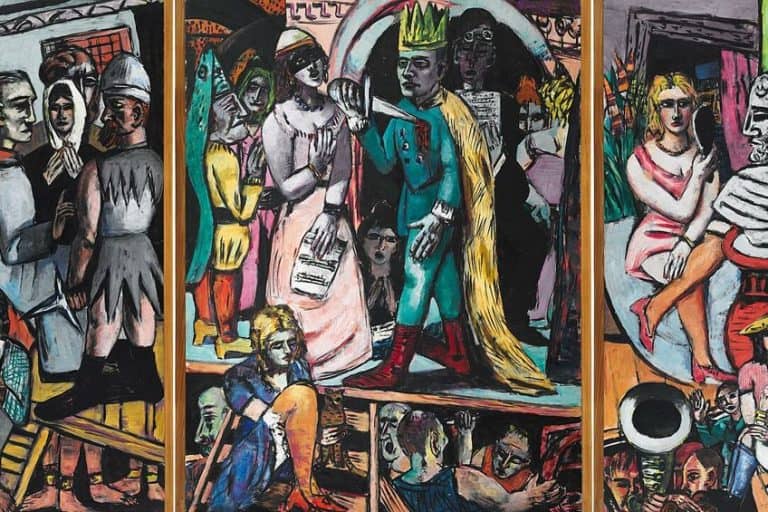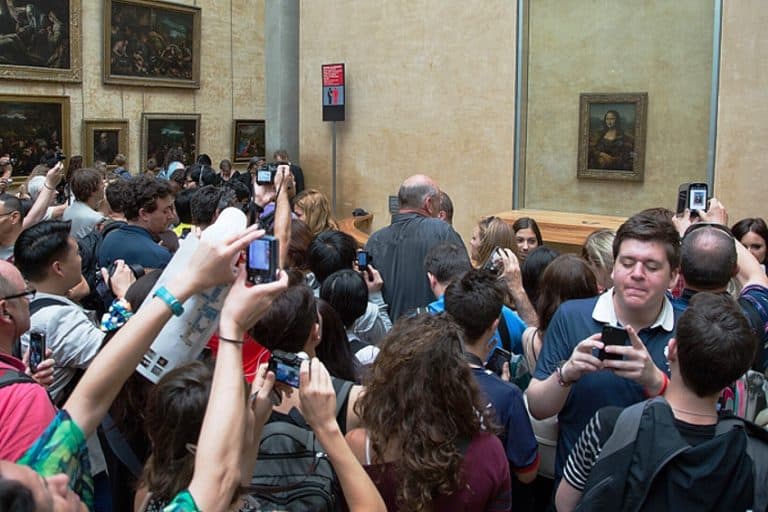Dutch Golden Age – A Look at the Masterpieces of This Era
In the annals of art history, the phrase “Golden Age in the Netherlands” resonates as a testament to an extraordinary epoch that left an indelible mark on the artistic landscape. Among the many chapters of cultural flourishing, the Dutch Golden Age stands as a pinnacle, radiating brilliance across the 17th century. Marked by unparalleled economic prosperity, burgeoning trade, and a booming middle class, this era witnessed a cultural renaissance that found its most exquisite expression in the realm of visual arts. In this article, we embark on a journey through the captivating tapestry of the Dutch Golden Age, exploring the multifaceted dimensions of creativity, innovation, and societal evolution that characterize this transformative period.
The Dutch Golden Age: A Tapestry of Prosperity, Art, and Innovation
The 17th century in the Netherlands unfolded as a tapestry of historic significance, marking the pinnacle of the Dutch Golden Age—a period characterized by an extraordinary confluence of prosperity, artistic brilliance, and transformative societal dynamics. The genesis of this epoch can be traced to the newfound independence of the Dutch Republic, as it emerged from the shackles of Spanish rule. This liberation set the stage for an unprecedented era of growth and cultural flourishing.
The engine driving the remarkable ascent of the Dutch Republic was its robust maritime trade network. The nation’s strategic geographical location and the establishment of powerful entities like the Dutch East India Company (VOC) and the Dutch West India Company (WIC) propelled the Netherlands to the forefront of global trade.
This maritime prowess not only fueled economic prosperity but also facilitated a rich exchange of ideas, cultures, and artistic influences from around the world. The Dutch Republic became a melting pot, fostering an environment where innovation and creativity thrived. Economic affluence, intricately woven into the fabric of the Dutch Golden Age, played a pivotal role in reshaping societal structures. The newfound wealth, driven by trade and commerce, permeated through various strata of society, leading to the rise of a flourishing middle class.

Unlike the rigid class structures prevalent in many European nations, the Dutch middle class emerged as a dynamic force, not only shaping economic landscapes but also becoming enthusiastic patrons of the arts. This departure from traditional models of patronage had profound implications for the art world, democratizing access to creative expression and enabling artists to explore a broader range of themes.
The cultural renaissance that unfolded during the Dutch Golden Age was not confined to artistic endeavors alone; it was a holistic transformation that saturated every facet of life.
The newfound prosperity and social mobility inspired a collective consciousness, fostering a sense of national pride and identity. This spirit of independence and innovation extended beyond the canvas, influencing scientific inquiry, philosophical thought, and societal norms.
As the Dutch Republic embraced its autonomy, the spirit of exploration and open-mindedness propelled not only artistic expression but also scientific inquiry. The Scientific Revolution found fertile ground in the Netherlands, with pioneers like Antonie van Leeuwenhoek making groundbreaking advancements in microscopy. This intersection of art and science epitomizes the interdisciplinary nature of the Dutch Golden Age, where intellectual curiosity and a thirst for knowledge were celebrated and encouraged.
Economic Flourishing and the Rise of the Middle Class
The economic flourishing that characterized the Dutch Golden Age was not merely a statistical phenomenon but a transformative force that suffused the daily lives of the Dutch populace. The trade network, masterfully navigated by entities like the Dutch East India Company (VOC) and the Dutch West India Company (WIC), transcended mere commerce; it became the lifeblood of a society on the brink of unprecedented change.
The bustling ports of Amsterdam, Rotterdam, and other key cities were not just hubs of trade but vibrant crossroads where diverse cultures converged.
The economic wealth was not confined to the elite; it trickled down, fostering the rise of a dynamic middle class whose aspirations and ambitions echoed through the cobbled streets. This burgeoning middle class was more than a demographic shift; it was a societal metamorphosis. It represented a departure from the rigid structures of feudal Europe, where artistic patronage was the exclusive domain of the aristocracy and the church. In the Netherlands, however, the middle class emerged as a vital pillar of support for the arts, fueling a democratization of artistic expression.

Unlike the grandiose commissions dictated by royal whims or religious institutions in other European nations, Dutch artists found themselves engaged by a more diverse and discerning clientele. The middle class, with its newfound affluence, sought art that resonated with the nuances of their everyday lives. This shift in patronage brought about a remarkable democratization of subject matter and artistic themes. Everyday scenes, domestic interiors, and depictions of common life became not only permissible but highly sought after.
Despite the prosperity and cultural flourishing, the Dutch Golden Age carried the weight of a complex and often troubling legacy.
The economic success of the Dutch Republic, a powerhouse driven by maritime trade, was intricately woven into the transatlantic slave trade and colonization. The wealth amassed during this period was, to a significant extent, rooted in the exploitation of overseas territories and the labor of enslaved individuals. The thriving economic boom coexisted with stark social inequality, as the spoils of prosperity were not equally distributed.
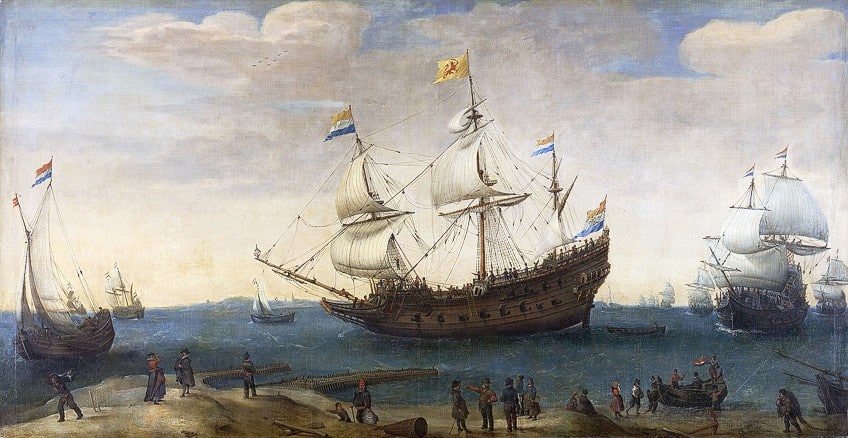
The burgeoning middle class that played a pivotal role in supporting the arts also contributed to the continuation of societal disparities. Moreover, the era was marred by religious tensions and conflicts, exemplified by the persecution of dissenting religious groups. Despite the celebrated artistic and economic achievements, it is imperative to confront the complexities and shadows that underscore the Dutch Golden Age, fostering a nuanced understanding of its historical significance. Recognizing these aspects encourages a more comprehensive and reflective assessment of the multifaceted nature of this pivotal period in Dutch history.
Artistic Innovation and Diversity
The artistic vibrancy of the Dutch Golden Age transcended mere abundance; it marked a transformative era that shaped the very fabric of creative expression. This flourishing period witnessed not just an increase in artistic output but a kaleidoscopic diversity of styles and genres that reflected the dynamic cultural landscape of the Dutch Republic. Artists of the time, liberated by economic means and cultural openness, embarked on a journey of exploration that would redefine the boundaries of artistic expression. The canvas of the Dutch Golden Age was expansive, accommodating a plethora of artistic movements that transcended traditional boundaries.
Painting, literature, and architecture thrived in a symbiotic relationship, each influencing and informing the other. The Dutch Republic emerged as a crucible where artistic influences, both domestic and international, converged to create a unique and distinctive cultural tapestry.
One of the defining characteristics of this period was the flourishing of the Baroque style, which left an indelible mark on Dutch art. Characterized by its dramatic use of light and shadow, vivid realism, and meticulous attention to detail, the Baroque aesthetic became a hallmark of the Dutch Golden Age. Artists such as Rembrandt van Rijn (1606 – 1669), with his masterful chiaroscuro and emotionally charged portraiture, and Johannes Vermeer (1632 – 1675), renowned for his luminous depictions of domestic life, epitomized the Baroque spirit. The play of light and shadow not only added depth and dynamism to their works but also imbued them with a heightened emotional intensity.

Yet, amidst the dominance of the Baroque, the Dutch Golden Age was far from monolithic. The era also witnessed the flourishing of other artistic movements, each contributing to the rich and varied artistic landscape. Dutch genre painting, for instance, captured the minutiae of everyday life, offering glimpses into the lives of the burgeoning middle class.
Artists like Jan Steen (1626 – 1679) and Pieter de Hooch (1629 -1684) excelled in portraying scenes of domesticity with a keen eye for detail and a touch of moral or satirical commentary.
Literature, too, experienced a renaissance during this period, with writers such as Joost van den Vondel (1587 – 1679) and Constantijn Huygens (1596 – 1687) making significant contributions. The Dutch Republic became a haven for intellectual exchange, fostering a literary culture that mirrored the diversity and vibrancy of the visual arts. Architecture, influenced by the grandeur of the Baroque and the practicality of Dutch engineering, gave rise to distinctive structures that reflected the innovative spirit of the age.
Masterpieces of the Dutch Masters
The Dutch Golden Age produced an assemblage of masterful artists whose works continue to captivate audiences worldwide. Rembrandt van Rijn, hailed as one of the greatest painters in Western art history, achieved unparalleled mastery in capturing the human condition. His use of chiaroscuro and emotive portraiture set a standard that reverberates through the ages. Johannes Vermeer, another luminary of the period, crafted exquisite scenes of domestic life, infusing ordinary moments with a transcendent beauty that endures.
A distinctive feature of Dutch Golden Age art was the prevalence of genre painting, which depicted scenes from everyday life.
Artists such as Jan Steen and Pieter de Hooch excelled in capturing the minutiae of domestic settings, offering glimpses into the lives of the burgeoning middle class. These genre paintings often carried moral or satirical messages, providing both aesthetic pleasure and social commentary. Let us look at the lives and artworks of these great painters.
Rembrandt van Rijn: Illuminating the Human Spirit on Canvas
| Date of Birth | 15 July 1606 |
| Date of Death | 4 October 1669 |
| Place of Birth | Leiden, Dutch Republic (now the Netherlands) |
| Nationality | Dutch |
| Art Movement | Baroque and Dutch Golden Age |
| Mediums Used | Oil on canvas, etching, and drawing |
| Famous Artworks |
|
Rembrandt van Rijn is celebrated as one of the most influential painters in the history of Western art. His artistic journey began under the tutelage of Pieter Lastman (1583 – 1633) in Amsterdam, where he honed his skills in the dramatic use of light and shadow that would later define the Baroque style. Rembrandt’s early works revealed a prodigious talent, earning him recognition in the Amsterdam art scene. The artist’s career unfolded during the Dutch Golden Age, a period marked by economic prosperity, cultural dynamism, and a burgeoning middle class.
Rembrandt’s artistic brilliance flourished against this backdrop, and he soon established himself as a sought-after portraitist, capturing the essence of his subjects with unparalleled depth and emotional resonance.
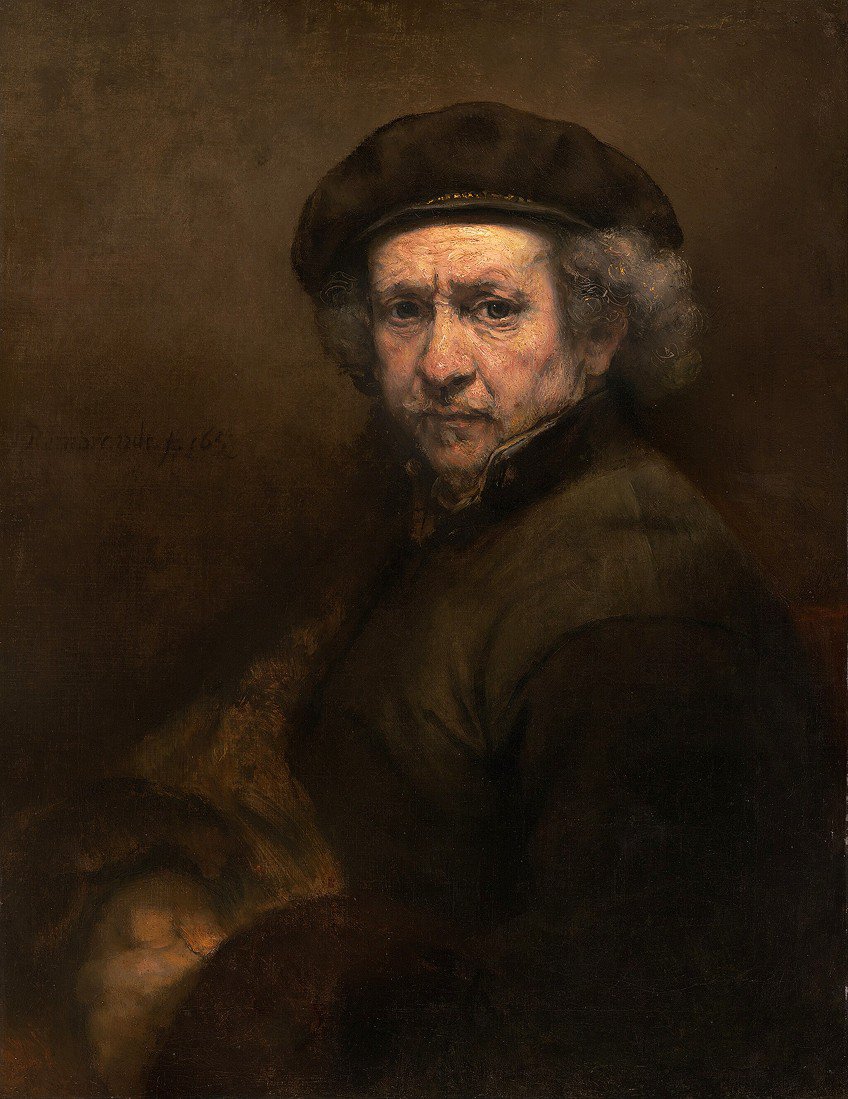
His innovative approach to portraiture, marked by a keen understanding of human psychology, set him apart from his contemporaries. Despite his early success, Rembrandt faced financial challenges in the latter part of his career, leading to bankruptcy and the loss of his home. However, these hardships did not diminish his creative fervor. In fact, they seemed to deepen his introspection, resulting in some of his most profound and evocative works. Rembrandt’s later years were marked by a departure from traditional norms, as he embraced a more expressive and experimental style that transcended the boundaries of his time.
The Night Watch (1642) by Rembrandt van Rijn
| Date | 1642 |
| Medium | Oil on canvas |
| Dimensions (cm) | 363 × 437 |
| Current Location | Rijksmuseum, Amsterdam, Netherlands |
One of Rembrandt’s masterworks that epitomizes his innovative spirit and mastery of light and shadow is The Night Watch. This monumental canvas stands as a testament to the artist’s ability to transcend conventional genres and redefine the possibilities of group portraiture. The Night Watch is not merely a depiction of a civic guard company; it is a symphony of movement, emotion, and chiaroscuro. The composition is dynamic, with figures in various poses and states of action, creating a sense of immediacy and vitality.
Rembrandt’s use of light is nothing short of theatrical, illuminating the central figures while allowing others to recede into shadow. The effect is not just visual but psychological, drawing the viewer into the narrative unfolding on the canvas.
The play of light in The Night Watch is a prime example of Rembrandt’s innovative technique. The central characters, Captain Frans Banning Cocq and Lieutenant Willem van Ruytenburch are bathed in a warm, golden light that emphasizes their importance. The surrounding figures emerge from the shadows, creating a visual hierarchy that guides the viewer’s gaze. The use of light not only enhances the dramatic impact of the scene but also serves as a metaphor for the leadership and unity of the civic guard.

Beyond the technical mastery, it is the psychological depth of Rembrandt’s characters that elevates The Night Watch to the realm of timeless art. Each face tells a story, conveying a range of emotions from determination and camaraderie to introspection and anticipation. Rembrandt’s ability to capture the human spirit in its myriad facets is what makes his work resonate across centuries.
Jan Steen: Master of Mirth and Domestic Merriment
| Date of Birth | 1626 (exact date unknown) |
| Date of Death | 3 February 1679 |
| Place of Birth | Leiden, Dutch Republic (now the Netherlands) |
| Nationality | Dutch |
| Art Movement | Dutch Golden Age |
| Mediums Used | Oil on canvas and drawings |
| Famous Artworks |
|
Jan Steen stands as a luminary of the Dutch Golden Age, renowned for his keen observations of everyday life and his ability to infuse his paintings with a delightful sense of humor. The son of a brewer, Steen’s early life was marked by artistic inclination, leading him to study under landscape painter Nicolaes Knupfer (1609-1655) and later, Jan van Goyen (1596-1656).
Steen’s artistic prowess, coupled with his vivacious personality, positioned him as a master of genre painting, capturing the bustling scenes of 17th-century Dutch life.
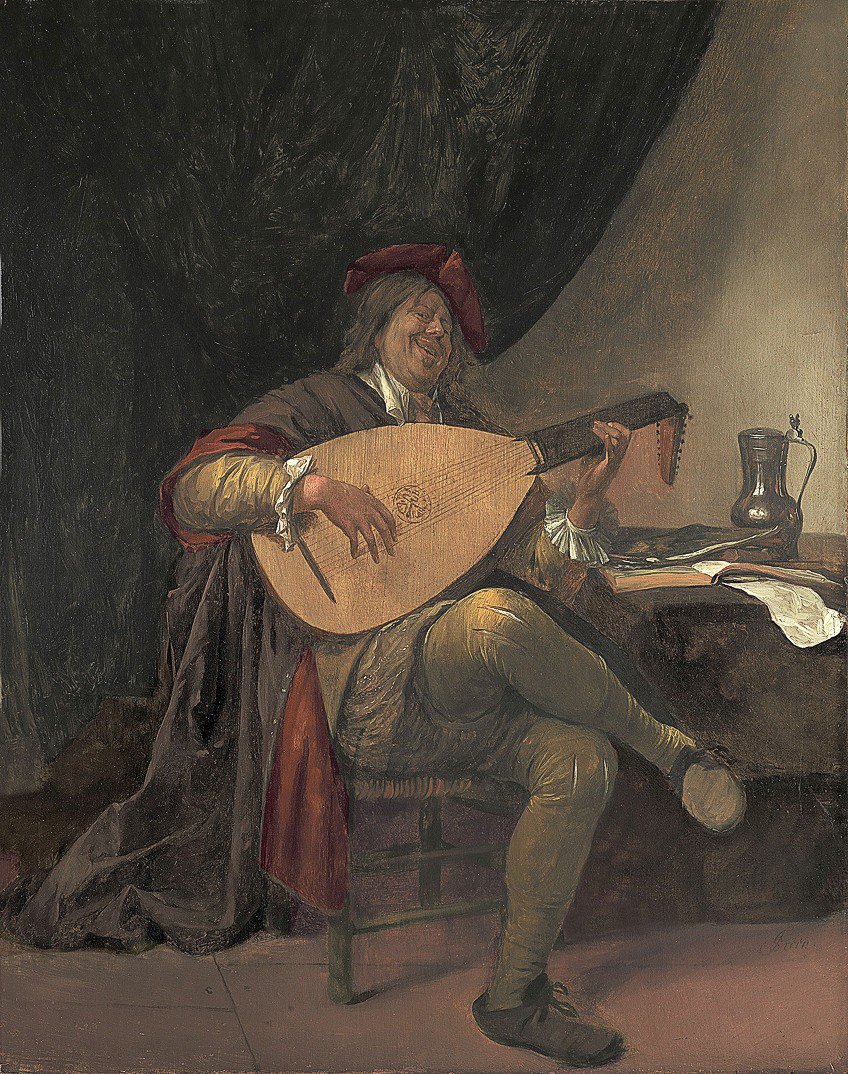
Steen’s oeuvre is characterized by a keen sense of satire, a penchant for depicting the chaotic charm of households, and a virtuosity in conveying the nuances of human expression. Despite facing financial difficulties throughout his life, Steen’s artistic legacy endured, leaving a collection of paintings that continue to resonate with viewers for their wit, detail, and insight into the human condition.
The Merry Family (1668) by Jan Steen
| Date | 1668 |
| Medium | Oil on canvas |
| Dimensions (cm) | 110.5 × 141 |
| Current Location | Rijksmuseum, Amsterdam, Netherlands |
Among Jan Steen’s masterpieces, The Merry Family stands as a quintessential representation of the artist’s ability to weave humor and warmth into his depictions of domestic life. Painted around 1668, this canvas serves as a window into the chaotic yet harmonious world of a bustling Dutch household.
The composition is dynamic, with family members engaged in various activities that reflect the ebullience of everyday existence.
In the foreground, a jovial couple clinks glasses, symbolizing the conviviality of the home. Steen’s meticulous attention to detail is evident in the rendering of textures – from the gleaming pewter pitcher to the furrowed brow of the family dog. The play of light and shadow enhances the atmosphere, giving the scene a warm and inviting glow.

The central focus of the painting is a mother lovingly attending to her child, surrounded by the chaotic charm of family life. This theme is a hallmark of Steen’s work – the celebration of the joyous, if sometimes tumultuous, aspects of domesticity. The expressions on each family member’s face convey a range of emotions, from the exuberance of youth to the wisdom of age, creating a tableau that is as emotionally resonant as it is visually captivating.
Pieter de Hooch: Illuminating Domestic Tranquility on Canvas
| Date of Birth | 20 December 1629 |
| Date of Death | 24 March 1684 |
| Place of Birth | Rotterdam, Dutch Republic (now the Netherlands) |
| Nationality | Dutch |
| Art Movement | Dutch Golden Age |
| Mediums Used | Oil on canvas |
| Famous Artworks |
|
Pieter de Hooch stands as a star of the Dutch Golden Age, renowned for his mastery in capturing the subtleties of light and the tranquil beauty of domestic scenes. Little is known about his early life, but he apprenticed under fellow Dutch genre painter Nicolaes Pieterszoon Berchem (1620 – 1683).
De Hooch’s artistic journey unfolded during a period of economic prosperity and cultural effervescence in the Dutch Republic.

De Hooch’s distinctive style emerged through his exploration of interior spaces bathed in soft light, often depicting middle-class life. His canvases, marked by meticulous details and a harmonious play of light, reflect a deep understanding of the human experience. Throughout his career, de Hooch’s works found patrons among the Dutch elite, showcasing his ability to elevate the mundane to the extraordinary.
The Bedroom (1658) by Pieter de Hooch
| Date | 1658 |
| Medium | Oil on canvas |
| Dimensions (cm) | 73 x 82.6 |
| Current Location | Rijksmuseum, Amsterdam, Netherlands |
One of Pieter de Hooch’s masterpieces that epitomizes his ability to illuminate domestic tranquility is The Bedroom, painted around 1658. In this canvas, de Hooch invites the viewer into an intimate domestic space, showcasing his trademark attention to detail and skillful use of light.
The scene unfolds in a well-appointed Dutch interior, where light streams through an open door, casting a soft glow across the room.
The meticulous rendering of textures, from the intricate patterns on the rug to the polished surfaces of the furniture, reflects de Hooch’s commitment to capturing the material richness of his subjects’ lives. The play of light, a hallmark of de Hooch’s oeuvre, creates a serene atmosphere, inviting contemplation.

The Bedroom is not merely a visual tableau; it is a narrative of daily life. A woman, engaged in a mundane but essential task of laundering, stands at a table. A child plays nearby, emphasizing the domestic harmony that de Hooch often sought to portray.
The open door reveals a courtyard beyond, connecting the interior and exterior spaces symbolically, creating a sense of continuity and tranquility.
De Hooch’s mastery lies not only in his technical prowess but in his ability to imbue everyday scenes with a sense of timelessness and universality. The carefully composed elements, combined with the play of light and shadow, create a scene that transcends its 17th-century setting, inviting viewers to connect with the timeless aspects of domestic life.
Johannes Vermeer: A Quiet Genius Unveiling Domestic Elegance
| Date of Birth | 31 October 1632 |
| Date of Death | December 1675 (exact date unknown) |
| Place of Birth | Delft, Dutch Republic (now the Netherlands) |
| Nationality | Dutch |
| Art Movement | Baroque and Dutch Golden Age |
| Mediums Used | Oil on canvas |
| Famous Artworks |
|
Johannes Vermeer remains one of the most enigmatic and revered figures of the Dutch Golden Age. Little is known about Vermeer’s personal life, adding an air of mystery to his artistic legacy. His artistic journey likely began under the tutelage of local painter Carel Fabritius (1622 – 1654).
Vermeer’s oeuvre is characterized by meticulous attention to detail, an exquisite mastery of light, and an uncanny ability to capture the intimacy of domestic life.

Unlike many of his contemporaries, Vermeer did not produce a vast body of work, with only around 34 to 36 paintings attributed to him. However, each canvas bears the unmistakable mark of a master, showcasing a distinctive approach to light, composition, and narrative.
Girl with a Pearl Earring (1665) by Johannes Vermeer
| Date | 1665 |
| Medium | Oil on canvas |
| Dimensions (cm) | 44 x 39 |
| Current Location | Mauritshuis, the Hague, Netherlands |
Among Vermeer’s masterpieces, Girl with a Pearl Earring stands as a testament to the artist’s ability to infuse quiet moments with profound elegance. This iconic work is a prime example of Vermeer’s fascination with capturing the nuances of light and the subtleties of human expression.
The painting features a young woman, turned slightly towards the viewer, her gaze meeting ours with a sense of intimacy.
She wears an exotic turban, and a luminous pearl earring dangles from her ear. The subdued color palette, dominated by shades of blue and gold, contributes to the tranquil beauty of the scene. Vermeer’s meticulous brushstrokes and attention to detail are evident in the rendering of the girl’s features, the play of light on her pearl earring, and the velvety texture of her clothing.
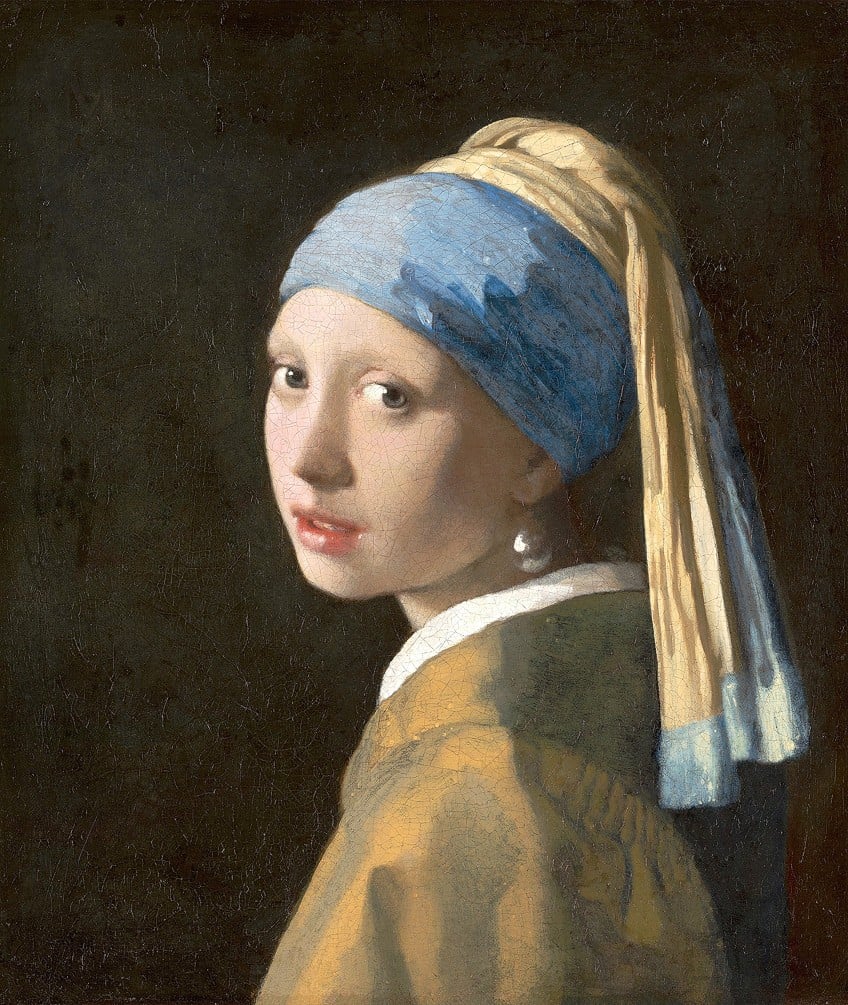
What makes Girl with a Pearl Earring particularly captivating is the enigmatic expression on the subject’s face. Her eyes seem to hold secrets, inviting viewers to ponder the narrative behind the gaze. Vermeer’s use of light is masterful, with a soft illumination that imparts a sense of ethereality to the girl’s features. The subtle gradations of light and shadow create a three-dimensional effect, enhancing the realism and emotional depth of the portrait. The pearl earring itself becomes a focal point, catching the light in such a way that it almost seems to glow. Vermeer’s attention to this detail not only showcases his technical prowess but also elevates the earring to a symbolic element, a luminous orb that adds an air of mystery and allure to the composition.
In conclusion, the Golden Age in the Netherlands emerged as a bright chapter in the annals of art history, where the canvases of masterful painters served as windows into a society propelled by economic affluence, cultural openness, and a fervent embrace of creativity. The enduring legacy of the Dutch Golden Age transcends the confines of time, resonating in the vibrant hues of masterpieces that grace galleries worldwide. As we continue to marvel at the canvases of Rembrandt, Vermeer, and Jan Steen, we are not merely witnessing the artistic achievements of a bygone era. We are glimpsing into a societal tapestry woven with innovation, diversity, and the indomitable spirit of a nation that, during its Golden Age, painted the canvas of history with strokes of brilliance and enduring influence.
Frequently Asked Questions
What Happened in the Dutch Golden Age?
The Dutch Golden Age, roughly spanning the 17th century, was a period of unparalleled prosperity, cultural flourishing, and societal transformation in the Netherlands. Marked by economic affluence driven by a robust maritime trade network, the era witnessed the rise of a burgeoning middle class that became a crucial patron of the arts, democratizing artistic expression. Artists like Rembrandt, Vermeer, and Jan Steen created masterpieces that not only showcased technical brilliance, but also reflected the diverse and dynamic aspects of daily life.
What Was the Dark Side of the Dutch Golden Age?
Despite its prosperity and cultural flourishing, the Dutch Golden Age harbored a darker side. The economic success was built on a complex web of global trade, including involvement in the transatlantic slave trade and colonization. The wealth accumulated by the Dutch Republic was, in part, derived from the exploitation of overseas territories and the labor of enslaved individuals. Additionally, social inequality persisted, with disparities in wealth and power existing alongside the economic boom. The era was also marked by religious tensions and conflicts, including the persecution of dissenting religious groups. While the Dutch Golden Age is celebrated for its artistic and economic achievements, it is essential to acknowledge the complexities and shadows that accompanied this period of historical significance.
Nicolene Burger is a South African multi-media artist, working primarily in oil paint and performance art. She received her BA (Visual Arts) from Stellenbosch University in 2017. In 2018, Burger showed in Masan, South Korea as part of the Rhizome Artist Residency. She was selected to take part in the 2019 ICA Live Art Workshop, receiving training from art experts all around the world. In 2019 Burger opened her first solo exhibition of paintings titled, Painted Mantras, at GUS Gallery and facilitated a group collaboration project titled, Take Flight, selected to be part of Infecting the City Live Art Festival. At the moment, Nicolene is completing a practice-based master’s degree in Theatre and Performance at the University of Cape Town.
In 2020, Nicolene created a series of ZOOM performances with Lumkile Mzayiya called, Evoked?. These performances led her to create exclusive performances from her home in 2021 to accommodate the mid-pandemic audience. She also started focusing more on the sustainability of creative practices in the last 3 years and now offers creative coaching sessions to artists of all kinds. By sharing what she has learned from a 10-year practice, Burger hopes to relay more directly the sense of vulnerability with which she makes art and the core belief to her practice: Art is an immensely important and powerful bridge of communication that can offer understanding, healing and connection.
Nicolene writes our blog posts on art history with an emphasis on renowned artists and contemporary art. She also writes in the field of art industry. Her extensive artistic background and her studies in Fine and Studio Arts contribute to her expertise in the field.
Learn more about Nicolene Burger and the Art in Context Team.
Cite this Article
Nicolene, Burger, “Dutch Golden Age – A Look at the Masterpieces of This Era.” Art in Context. January 1, 2024. URL: https://artincontext.org/dutch-golden-age/
Burger, N. (2024, 1 January). Dutch Golden Age – A Look at the Masterpieces of This Era. Art in Context. https://artincontext.org/dutch-golden-age/
Burger, Nicolene. “Dutch Golden Age – A Look at the Masterpieces of This Era.” Art in Context, January 1, 2024. https://artincontext.org/dutch-golden-age/.


